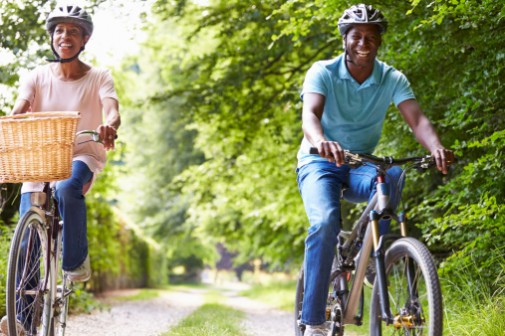5 tips for exercising safely outdoors

The days are long, the skies are blue, and it’s consistently above 70 degrees. With such beautiful weather, you’re no doubt feeling the urge to get outdoors for your exercise routine. Working out in the elements is a great way to vary your regular workout, and whether you’re running, swimming or cycling, you’re sure to get a good sweat and your heart rate going.
But it’s also easy to overdo it and get your body into serious trouble. The effects of dehydration can lead to nausea, dizziness, cramps, and in some cases, seizures, kidney failure, and even death.
Dr. Jose Guevara, family medicine physician with Advocate Medical Group in Elgin, Ill., provides the following tips to ensure your workout is safe yet effective in the summer months.
- Talk with your doctor first. “Before you tackle the great outdoors, it’s paramount to make sure your body is up to the task,” Dr. Guevara says. “The heat of a summer workout puts extra stress on your body, so have a conversation with your physician to determine how much you can handle.”
- Work out at the right time of day and wear appropriate clothing. “Avoid exercising outside in the peak hours from 10 a.m. to 3 p.m. Not only will this help your body internally, but your skin will be better protected from the sun’s peak-hour rays.”
- Stay hydrated. “I cannot stress enough how important this is. Drink plenty of water before you go out, and bring a water bottle with you. Take a mouth full every 10 or 15 minutes, even if you’re not thirsty,” Dr. Guevara says.
- Check the weather before you start. Heat advisory? Move the workout indoors. “Your outdoor plans can wait for safer weather, and your body will greatly benefit from your adaptability,” Dr. Guevara says.
- Listen to your body. “Most of the time, your body will tell you when you’ve overdone it, and it’s your job to listen to it. Nausea and dizziness is not a sign that you’re having a fantastic workout. It’s a warning signal that means you need to stop,” he says. “And are you feeling oddly chilled considering the weather? Chills or goose bumps are a sign that you’re in the danger zone. Stop the workout and get rehydrated.”
Need help finding a physician? Click here to choose from over 1,000 top docs.
Related Posts
Comments
5 Comments
About the Author
health enews staff is a group of experienced writers from our Advocate Health Care and Aurora Health Care sites, which also includes freelance or intern writers.


















These are great tips! Especially since I love running outside.
This is a great picture of the folks on their bicycles….but they should be wearing bicycle helmets!
The advice is good, but why does the picture show a couple biking without helmets? That is definitely not the safest way to go.
Glad to see the new picture in the article with the bicycle riders wearing helmets!
Some great tips here. I especially appreciate number 4, listening to your body!